DSD puts strong focus on environmental management in every project it delivers in order to make Hong Kong a livable city. In recent years, we actively campaigned for Blue-Green Infrastructure, emphasising the protection of river ecosystems in addition to environmentally friendly construction practices. These initiatives, alongside various emissions reduction and energy conservation measures at our facilities, are instrumental in promoting sustainable development in Hong Kong.
Blue-Green Infrastructure
The 2015 Policy Address advocates the concept of revitalising water bodies in large-scale drainage improvement works and planning drainage networks for New Development Areas, and strives to promote greening, biodiversity, beautification and water-friendly activities at the same time of achieving effective drainage with a view to constructing sustainable drainage facilities and building a better environment for the public. To this end, DSD actively implemented the concept of revitalisation of water bodies by building scenic environment with lush greens and pristine blues through Blue-Green Infrastructure, so as to offer more opportunities for the citizens to get closer to water bodies and learn to cherish natural resources.
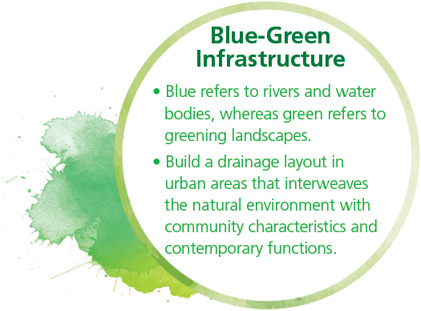
Revitalising River Channels and Improving Ecologies
Long before DSD formally announced the concept of Blue-Green Infrastructure, we had already experimented with various ecological conservation measures in our river improvement projects with a view to minimising environmental impact. We endeavoured to retain the natural habitat in rivers by preserving the natural course of the waterway, avoiding the use of concrete in constructing drainage channels, and keeping in-situ soil on riverbed in the design of our river improvement works. We also conducted necessary assessments in accordance with the “Environmental Impact Assessment Ordinance” in Hong Kong before commencement of any major drainage projects in order to evaluate and mitigate the potential environment impact as far as practicable.
We work closely with green groups and collect their opinions and suggestions so as to better protect the species inhabiting in the rivers. A good example is the improvement works at Lam Tsuen River at Tai Po. With an affected area up to 100,000 square metres, we collaborated with green groups well before commencement of works to capture the Hong Kong newts residing within the site area by hand and relocated them to upstream of the river so as to protect them from being affected by site works. Several years after project completion, an increase in the quantity of Hong Kong newts and other species that inhabited in Lam Chuen River is observed.
Other Conservation Measures Adopted by DSD:
- Providing fish ladders with natural materials to allow fishes to swim along the river
- Laying grasscrete panels on riverbanks and riverbed for plant-rooting
- Retaining the soil and plants seeds in-situ for laying the riverbed
- Placing gravel on the riverbed to build an aquatic habitat
In some special circumstances, we need to take a balance between flood protection and ecological conservation. For instance, in view that part of the mangrove swamp situated at the outlets of Shan Pui River and Tin Shui Wai Nullah impedes the regular outflow of the river, we prune the mangroves whenever necessary to reduce flood risk in the Yuen Long and Tin Shui Wai areas.
Revitalising Nullahs in Urban Areas and Creating Public Spaces
At the same time of securing effective drainage, DSD will integrate the concept of revitalising water bodies in large-scale drainage improvement works and planning drainage networks for New Development Areas, so as to build a better environment for the public. Given the scarce land resources in Hong Kong, revitalising river channels and nullahs in urban areas will bring vast swathes of accessible public spaces to the public for strolling, jogging and cycling right by the shore.
We are currently undertaking the Kai Tak Nullah improvement works to transform the waterway into a green and pleasant “Kai Tak River” while upgrading its drainage capacities. Riding on the success of the improvement works at Ho Chung River in Sai Kung, we will install fish shelters and boulders on the riverbed of Kai Tak River to improve microhabitats and promote biodiversity. In addition, we are also carrying out the planning and design for the nullahs revitalising works at King Yip Street in Kwun Tong and Yuen Long Town Centre, in which more diverse elements of ecological conservation and waterscape aesthetics will be introduced.
Roof Greening
Green roof goes beyond architectural aesthetics; it also improves air quality, lowers indoor temperature and reduces energy consumption in buildings. In 2014-15, we completed roof greening for five of our facilities.
| DSD’s Facilities with Roof Greening Completed in 2014-15 |
|---|
| Shuen Wan Stormwater Pumping Station, Tai Po |
| Stonecutters Island Sewage Treatment Works |
| Kowloon Bay Sewage Interception Station and Pumping Station |
| Tuen Mun Western Interceptor Sewer Pumping Station |
| Pillar Point Sewage Treatment Works, Tuen Mun |
Given the thinner topsoil on the roof than at-grade, roof greening projects in the past tended to use easy-growth horticultural species as regular irrigation, weeding, fertilisation and replacement of lost/ageing plants were necessary to ensure plant health.
To source plants that are suitable for roof greening, we experimented with various succulent plants in the Crassulaceae (stonecrop) family, growing a mix of needle and stringy stonecrop (Sedum lineare, S. samentosum), lavender scallops (Bryophyllum fedtschenkoi), and common and moss-rose purslane (Portulaca oleacea, P. grandiflora) amongst others. Results indicated that they can all adapt to the climate in Hong Kong and are fit for use on DSD’s facilities. Watering for these plants needs to be carried out only once or twice a month during the dry season, which enables low maintenance cost and good greening effect.
In 2014-15, we carried out roof greening with Crassulaceae succulent plants at three existing facilities. The green roofs were managed under low-maintenance modes. The greening effects were monitored and the results were very encouraging.
| DSD’s Facilities undertaking Roof Greening in 2014-15 |
|---|
| Kwun Tong Intermediate Sewage Pumping Station |
| Dry Weather Flow Interceptor Pumping Station No. 4, Kai Tak |
| Lok Wo Sha Sewage Pumping Station |
Common purslane blossoming at Sha Tin Sewage Treatment Works
Improvement Works at Pillar Point Sewage Treatment Works, Tuen Mun
Located south of Lung Mun Road in Tuen Mun, the Pillar Point Sewage Treatment Works (STW) incorporated various green elements during the design stage to beautify the environment of the STW and the surrounding.
Pillar Point STW occupies an area of around 44,000 square metres, in which over 30% (up to 15,000 square metres) is designated as landscape zone, covering almost 2,000 square metres of green roofs and 100 square metres of vertical greening, reinforced grasscrete pavement, and plantation areas.
We preserved 240 existing trees during the improvement works and planted 270 new trees across 11 native species within the landscape zone. We also planted about 229,000 shrubs to reinforce the green-screen effect and to visually blend the plant buildings with softer shades of green into the surrounding landscape.
Pillar Point STW, Tuen Mun




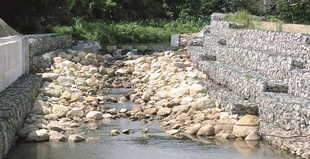
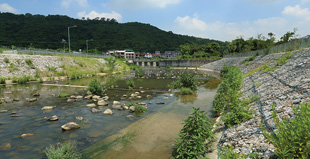
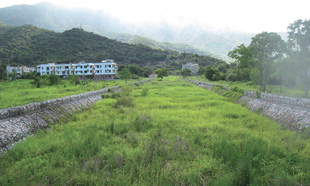
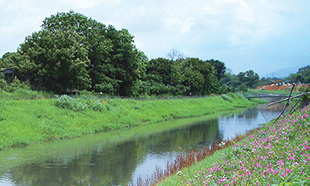
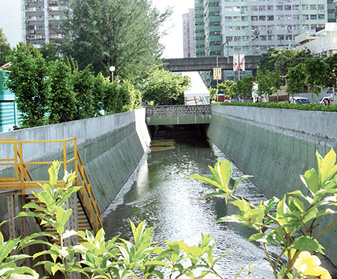
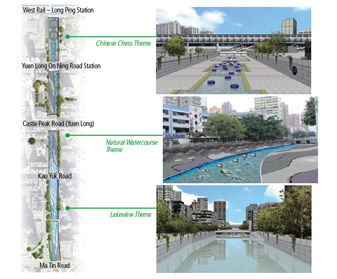
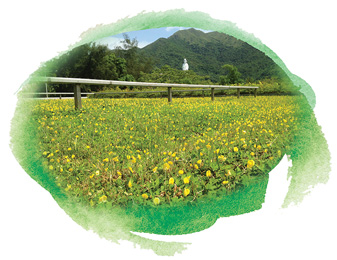
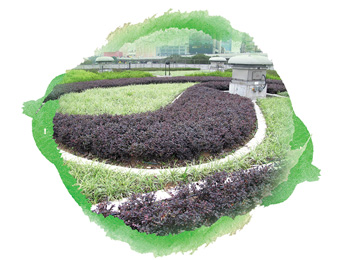
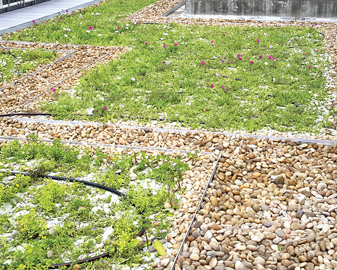
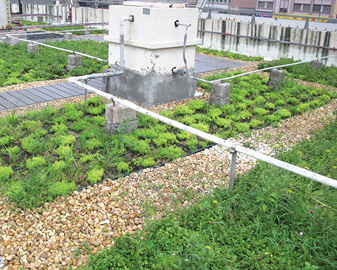
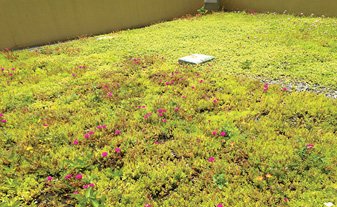
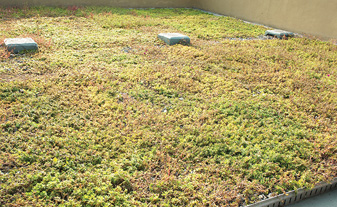
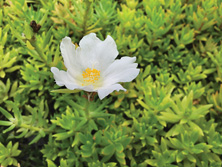
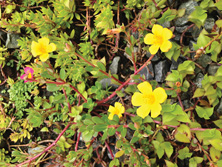
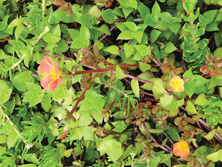
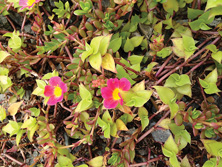
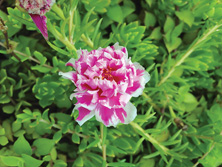
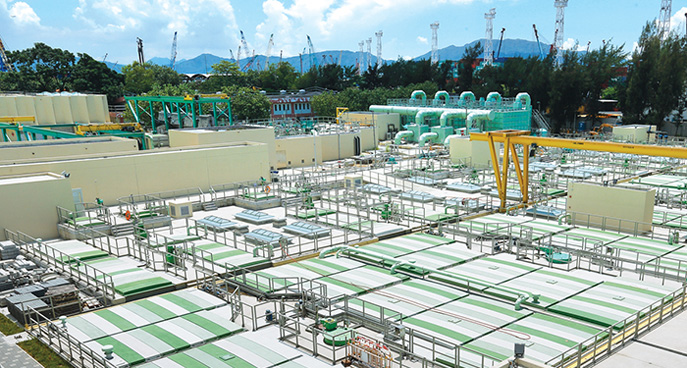
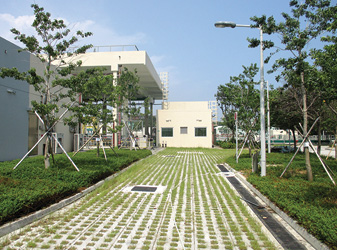
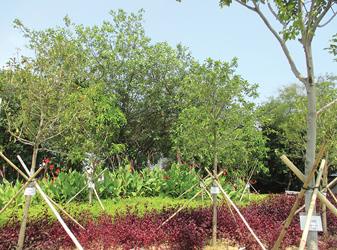
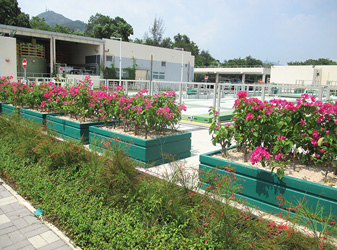
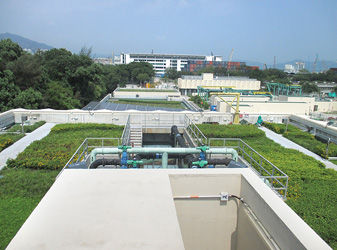
 Sitemap
Sitemap